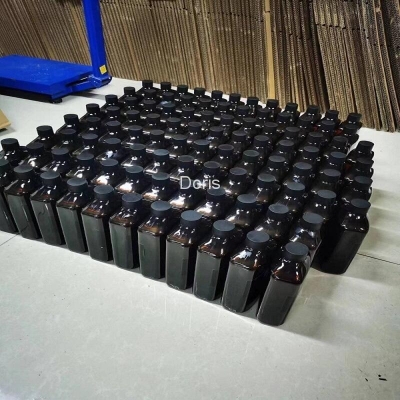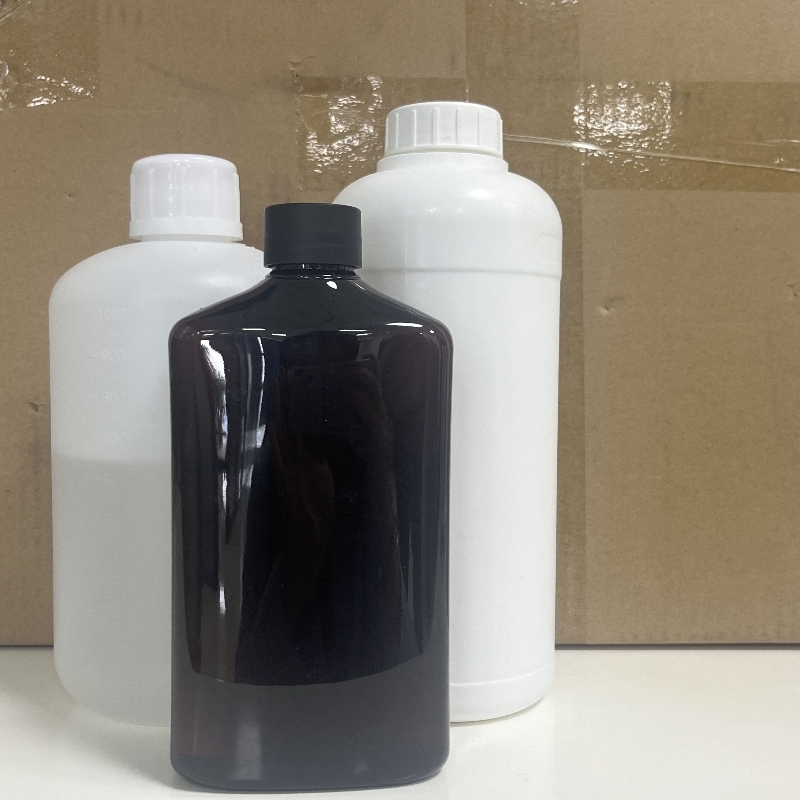In-depth analysis: how will the future of domestically-made innovative drugs go after the talks are over?
-
Last Update: 2019-12-18
-
Source: Internet
-
Author: User
Search more information of high quality chemicals, good prices and reliable suppliers, visit
www.echemi.com
Although the development history is short and the gap is large, the rise of domestic innovative drugs has formed a new force of innovation, and the trend of national negotiations on exclusive import of new drugs monopoly has been broken This round of national talks also has the first time for Chinese and foreign enterprises to compete in multiple treatment fields, such as tumor targeting, PD-1, HIV and hepatitis C drugs There must be one or several domestic innovative drugs behind the price reduction logic of each foreign-funded imported product, but the extreme decline of imported drugs is gradually reducing the core competitiveness of domestic innovative drugs and generic drugs For the domestic biopharmaceuticals just started, what is the future of domestic innovative drugs? Since 2015, driven by a series of innovation driven policies, China's pharmaceutical pattern has changed significantly, and the third new sector, i.e domestic innovative drugs, has gradually started to emerge, which has changed the two long-term leading sectors of domestic imitation and import innovation in recent decades, forming three new blocks: domestic imitation, import innovative drugs and domestic innovative drugs According to iqvia data, at present, the proportion of domestic generic and innovative drugs is about 80% and 20% of the market share Among the innovative drugs, the proportion of domestic innovative drugs is mainly imported, and the proportion of domestic innovative drugs is still very small It is after 2016 that the topic discussion of domestic innovative drugs really enters the industry's attention In fact, among the domestic innovative drugs, the leading enterprises that started their own businesses early and devoted themselves to innovative drugs include Xinda, Baiji Shenzhou and Shenzhen micro core biotechnology Their R & D and clinical capabilities are their core competitiveness The other is the large pharmaceutical enterprises with sales teams and drug dealers, typically Hengrui and Zhengda Tianqing Their early layout in the field of innovative drugs is ahead of the industry in large pharmaceutical enterprises, and it is difficult for other enterprises to compete with it For example, the enterprises such as Shihua, Qilu and Haosen are combined with imitations, and the ones that can be approved to form productivity and profits in the short term are still imitations Medicine is the main More noteworthy are a number of biotechnology companies that have been developing rapidly since 2018, such as Junshi biology, Geli pharmaceutical, Hualing pharmaceutical, Junshi biology, cornerstone pharmaceutical, Fuhong Hanlin, Yasheng pharmaceutical, etc This article will focus on 01 A series of policies promote the domestic innovative drugs to enter the rapid development track The pharmaceutical industry is a high-risk, high investment and highly regulated industry To make innovative drugs in China, products, funds, talents and policies are indispensable Although in the field of biopharmaceutical, enterprises are the main body of new drug research and development, but its rapid development can not be separated from a series of innovation driven policies and capital support In 2015 and 2017, the two offices jointly issued a document to encourage the innovation and development of China's pharmaceutical industry, which is a milestone in promoting the innovation and development of China's pharmaceutical industry It is very rare for two top-level general offices of the state to work together and issue documents It can be seen that the relevant departments of the Chinese government have realized that the pharmaceutical reform and innovation have reached the deep-water area The development of domestic innovative pharmaceutical industry is an important measure for us to get rid of the technology monopoly of the western countries and the hat of "imitation power" During 2015-2017, due to the promotion of policies, the investment in R & D of enterprises increased significantly The first batch of beneficiaries of innovation policies came from 15 first-class innovative drugs, and they were successively approved for production, including exetinib, apatinib, sidabamide, and conbercept In 2018, the State Food and Drug Administration approved about 54 new drugs, 9 of which are domestic first-class new drugs We predict that in 2019, the same level will be maintained or even increased What's more, in 2016-2018 overall clinical trials, imported drugs no longer occupy the dominant position in the past Clinical trials of new drugs applied by domestic biopharmaceuticals alone accounted for 45%, including other domestic innovative drugs, with a total proportion of 70%, up 15% compared with 2012-2015 At the same time, the R & D ratio of domestic innovative drugs has increased year by year For example, Hengrui, Fosun and Zhengda Tianqing, the average value in 2017 was 12%, while 10 years ago, the average value of R & D in China's industry was about 2-3% It is China's "National Science and technology major project" that supports domestic innovation from the source Since 2008, under the unified leadership of the central government, the Ministry of science and technology, the development and Reform Commission, the Ministry of Finance and the Department of science and education of the health and Health Commission, as of July 2019, 139 varieties of "major new drug creation" have obtained new drug certificates, including 44 new drugs of category 1, eight times the number before the implementation of the special project At the press conference of "major innovation projects" at the end of July this year, it was introduced that over ten years since the implementation of major projects, more than 1000 projects have been set up in 10 major diseases, with funding support of 20 billion yuan, and a number of major landmark achievements have been produced, leapfrog development in key areas has been realized, independent innovation capacity has been improved, and China's pharmaceutical innovation technology system has been preliminarily established In terms of talent attraction, following the implementation of the national "thousand talents plan" in 2008, some overseas medical scientists and researchers, with the feelings and Entrepreneurship of revitalizing the motherland, have returned home to innovate more and more Most of the company's senior management team come from the headquarters or Chinese multinational pharmaceutical companies, they are very professional, most of them have rich industry and policy experience In terms of capital acquisition, the new deal of listing on the Hong Kong Stock Exchange in April 2018 created a huge opportunity for the financing of unprofitable pharmaceutical and biological companies On August 1, 2018, Geli pharmaceutical, as the first start-up enterprise that dares to eat crabs, was approved for IPO and became the first unprofitable biotechnology company successfully listed on the Hong Kong stock exchange, with a financing of 400 million US dollars Since then, a number of unprofitable biomedical enterprises have been listed in Hong Kong As of December 12, 2019, 13 companies have successfully listed in Hong Kong According to statistics, as of December 17, 2019, 24 pharmaceutical manufacturing enterprises have applied for IPO on science and technology innovation board 02 The development prospect and growth gap of domestic innovative drugs according to the forecast of China's pharmaceutical market prospect in the latest report of McKinsey, at least one Chinese innovative drug enterprise will become the top 10-15 international pharmaceutical giant in the next 10 years Who can become the next "Huawei pharmaceutical" in China? Analyze the external macro environment and summarize four favorable development trends The first is the huge market prospect China is the second largest pharmaceutical country in the world Today, China has become one of the most aging countries in the world (in 2030, the number of people over 65 years old will exceed 230 million) Second, the innovation of medical science and technology has been incorporated into the national development strategy, and the innovation drive is an important engine for the high-quality growth of medicine The third is policy pressure - generic "consistency evaluation" and "4 + 7" volume procurement, which forces enterprises to start innovation and accelerate the transformation and upgrading of the pharmaceutical industry The fourth is the rise of local innovation enterprises, and the layout of the whole industrial chain in China, and gradually enhance the competitiveness of participating in globalization While seizing the opportunity, domestic innovation, especially start-up Biopharmaceutics, is also facing great challenges To be more precise, it should be in the process of growing gap and pain Let's review the basic situation of the main start-up biopharmaceuticals The main characteristics are as follows: first, most of them are concentrated in Shanghai, Zhejiang, Jiangsu, Beijing and other cities, with an average entrepreneurial development time of less than 10 years The overall scale of the enterprises is small, but most of them have at least 5-6 products under research, which are in different clinical trial stages, and constantly enrich the product line under research 2、 The approved products of start-up biology are relatively single, 67% of biopharmaceuticals focus on the field of tumor, the others are diabetes, liver disease, cardiovascular and nervous system At the same time, the homogenization competition of innovative products is more intense, the lack of differentiation between products, and the race track is too crowded For example, PD-1 and PD-L1 are regarded as the most promising ones In March this year, about 45 companies are developing PD1 and PDL antibodies and conducting more than 100 clinical trials At present, 5 funds have been approved, and Baiji Shenzhou PD-1 will be approved in succession 3、 Financing mode mainly depends on venture capital and capital market Different from a large number of domestic enterprises, it starts to accumulate funds gradually from imitation and starts to make innovative drugs gradually from transformation Due to the high cost of innovative R & D drugs and the longer time to recover the cost, how to balance the short-term profit goal of investors and the long-term goal of innovative drug development is a big challenge for start-ups 4、 The R & D path is basically license in, i.e the patent license obtains the development right in China, so most of them are follow-up innovative "me too" products, lacking original innovation 5、 As it is just in its infancy, its market share in innovative drugs is very small, its growth rate is also low, and its contribution rate is also low According to a recent analysis by the China Council for the promotion of drugs, by the end of the half year of 2019, although some of the start-up biological enterprises have begun to list their products, no companies have yet turned around 03 The rise and catch-up of domestic innovative drugs has formed a new force of innovation Even though the development history is short and the gap is large, the rise of domestic innovative drugs has formed a new force of innovation, which is unstoppable and has a great impact on the pharmaceutical industry in China A well-known academician of the Chinese Academy of Engineering once said: "in the pharmaceutical market, if we only import drugs, we will not be able to break the price and technology monopoly, and will always be subject to Therefore, with the new drugs developed independently, it means that it has the right of independent pricing, because it can reduce the price through bidding, and finally turn these valuable drugs into drugs that are actually accessible to the common people For a developing country like China, it is of great significance " It is in recent years that innovative pharmaceutical enterprises in China are really making efforts In 2018, a number of new domestic cancer drugs have been launched in China, breaking the monopoly of imported drugs in this field, greatly reducing the overall price of such drugs, so that more domestic patients with advanced cancer can benefit from survival In this round of national health insurance negotiations, the role of domestic innovative drugs cannot be ignored First, because of the rapid rise of indigenous innovative drugs, the trend of monopolistic national negotiations on exclusive importation of new drugs has been broken For the first time, there has been a competition among Chinese and foreign enterprises for innovative drugs in multiple treatment fields, such as tumor targeting, PD-1, HIV and hepatitis C drugs Eight domestic drugs (but basically enterprises of a certain scale) have been introduced for class 1 new drugs in 12 countries Second, there must be one or several domestic innovative drugs behind the price reduction logic of each foreign-funded imported product Domestic innovative drugs play a positive role in restraining the high price of imported drugs and promoting healthy market competition For example, due to the competition of exetinib of Beida pharmaceutical, the price of gefitinib (Iressa) of AstraZeneca has gradually decreased from 530 yuan / tablet at the beginning of listing to 228 yuan / tablet Under the competition of conbercept in Kanghong pharmaceutical industry, Novartis' leizhumab gradually decreased from 9725 yuan / dose at the beginning of listing to 5700 yuan / dose Due to the competition between Gelita norivena and other domestic hepatitis C innovative drugs, Geely's similar products are priced at US $84000, with an average of US $1000 per day Its price dropped from 500000 yuan to 60000 yuan According to the competition between Cinda silimab and junsitripril, the price of K drug in PD-1 is 53% lower than that in the United States, and that of O drug is 57% lower than that in the United States 04 Domestic innovative drugs are losing their core competitiveness on the starting line When launching a series of innovation driven measures and new plans for health insurance negotiation, the industry realized that the country has also noticed some new problems in the process of solving important livelihood problems All participating in this round of health care negotiations are innovative drugs that have been listed for an average of 2-3 years since the catalog was adjusted in 2017, including 2018
This article is an English version of an article which is originally in the Chinese language on echemi.com and is provided for information purposes only.
This website makes no representation or warranty of any kind, either expressed or implied, as to the accuracy, completeness ownership or reliability of
the article or any translations thereof. If you have any concerns or complaints relating to the article, please send an email, providing a detailed
description of the concern or complaint, to
service@echemi.com. A staff member will contact you within 5 working days. Once verified, infringing content
will be removed immediately.







